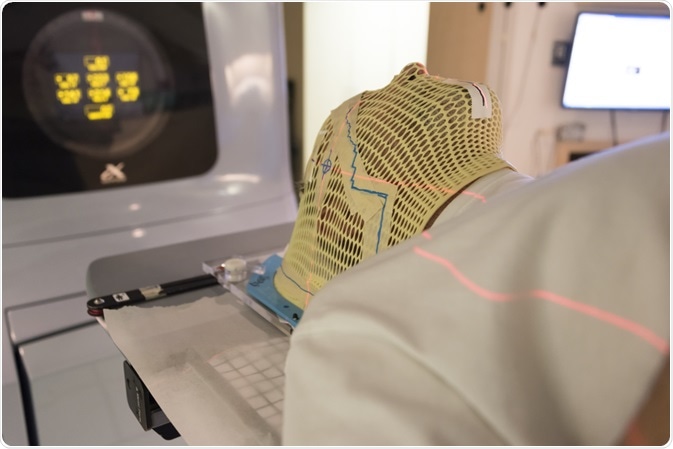Radiation therapy is a common treatment for various types of cancer and can be used as a stand-alone treatment or alongside other methods, such as chemotherapy and surgery.

Image Credit: John Panella / Shutterstock.com
In addition to its role in the treatment of cancer, exposure to radiation is widely accepted to cause some cancers. Given this characteristic, the use of radiation therapy in cancer treatment should maximize the effect it has on the local tumor, whilst maintaining a low risk of cancer in the future to nearby healthy tissues.
How radiation therapy works
Radiation therapy is very effective at preventing further cancer growth by damaging the DNA of cells and inhibiting them from replicating in the normal cell cycle. As cancer cells tend to replicate more quickly than normal cells, they are affected more acutely by radiation and are therefore eliminated well through this therapy.
However, as the effect of radiation is evident on the cells surrounding the tumor, normal cells in the body can also be damaged. This is reduced where possible by focusing the beam of radiation directly towards the tumor but is difficult to eliminate entirely.
As a result, there are often localized side effects due to the damage of normal cells as the radiation passes through the body. These include skin irritation and ulceration of some areas, such as the mouth and stomach, if they are exposed to radiation.
Risk of second cancer
Cancer is a very common disease and it is possible for one patient to have several types of cancer throughout their life. Second cancer refers to another tumor in a separate part of the body, which may present several years after the first tumor.
Exposure to radiation has long been associated with an increased risk of cancer. This effect has been observed in individuals with workplace environments that involve exposure to radiation, as well as in the aftermath of populations affected by the Hiroshima atomic bomb attack in Japan. As a result, medical radiation, including that which is used for optical imaging, has been considered as a possible cause of cancer, with scientific research confirming this hypothesis.
Theoretically, this effect can be explained by the non-specific nature of radiation therapy. Whilst practitioners endeavor to target the radiation beam as closely as possible to the area of the tumor, some normal cells of the body are always affected. Similar to the cancer cells, the DNA of healthy cells becomes damaged and can change the functionality of the cell.
Types of second cancer
Leukemia is a common second cancer for individuals who have previously undergone radiation therapy. The likelihood that an individual will be affected depends on the extent of bone marrow that was exposed to radiation and the dose of the therapy. Cases of leukemia that develop due to radiation therapy usually develop a few years after radiation therapy, most commonly between five and ten years after the conclusion of therapy.
It is also possible for radiation therapy to lead to the formation of a solid tumor in another area of the body. These usually take longer to develop and are diagnosed about ten to twenty years after the therapy has taken place. The likelihood of patients experiencing a second solid tumor depends on the treatment dose, the age of the patient, and the area that was treated.
The benefit to risk ratio
It is important that treatment with radiation therapy only takes place if the benefit it offers to the patient is likely to outweigh the risk of any side effects it may cause, including second cancer.
Benefits of radiotherapy outweigh the risks of mortality and second cancers
In the vast majority of cases, the benefits of radiation therapy warrant the use of the treatment. Several scientific studies have supported this approach, as the eradication of primary cancer generally leads to increased survival rates, even if patients experience second cancer later in life. Additionally, second cancers generally appear a substantial amount of time later, from five to twenty years following exposure to radiation.
As a result, radiation therapy is a very common treatment for cancer that helps many people annually. Some techniques are recommended to reduce exposure to healthy cells, such as intensity-modulated radiation therapy (IMRT). This spreads the radiation throughout other parts of the body, whilst keeping concentration at the heart of the tumor high by sending radiation beams for several different angles.
References
Further Reading
Last Updated: Feb 17, 2023